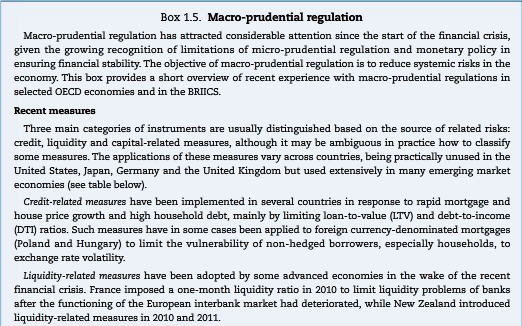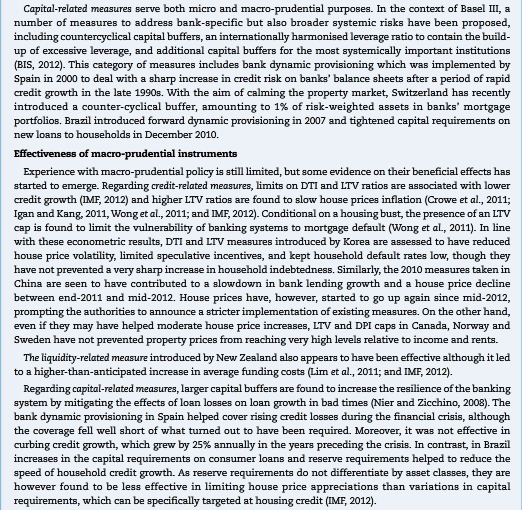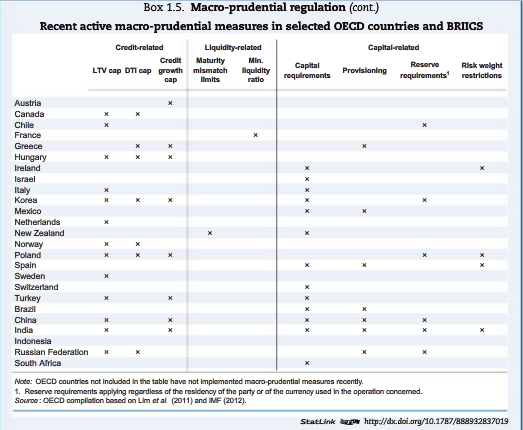
Late last year, the Reserve Bank of Australia (RBA) released a paper examining the macro-prudential policy actions by in 57 economies over the past 30 years against time series data on housing prices, rent, housing credit and interest rates. The paper found that macro-prudential policy tools, such as caps on loan-to-value ratios (LVRs) and debt servicing ratios, and/or increased capital adequacy requirements on higher LVR mortgages, were effective in mitigating boom/bust cycles in mortgage credit and house prices.
According to the paper (my emphasis):
The results establish a link between interest rates and macro-prudential policy actions and subsequent fluctuations in real housing prices and real housing credit. Higher short-term interest rates tend to slow housing price appreciation and housing credit growth, although the magnitude of the effect is modest. Actions categorised as prudential measures (maximum LTV and DSTI ratios, provisioning requirements, real estate exposure limits and risk weights) are consistently jointly significant in our regressions. Decreases in the maximum LTV ratio are associated with reductions in the growth rate of housing prices. Similarly, reductions in the maximum DSTI ratio and increases in provisioning requirements are associated with reductions in the growth rate of real housing credit. We were unable to find any consistent relationship between changes in non-interest rate monetary policy measures and either housing price or credit growth, however. Taken together, our results suggest that certain types of macroprudential policies can be effective tools for stabilising housing price and credit cycles. This is good news for central banks seeking additional flexibility in their pursuit of macroeconomic and financial stability objective.
Despite these results, the RBA continued to rule-out Australia implementing macro-prudential tools, claiming that they “would not prevent boom-bust cycles in housing prices”.
Overnight, the OECD released interesting analysis of macro-prudential tools implemented across the world. Like the RBA paper above, it found macro-prudential tools to be relatively effective in mitigating the credit cycle and booms and busts in house prices. The key extracts of the OECD report are captured below.




One wonders if the RBA / APRA will ever acknowledge the weight of evidence supporting macro-prudential policy and follow other nations, such as New Zealand and Canada, in adding macro-prudential tools to their regulatory kit. Australia is increasingly looking like the odd-man-out.

